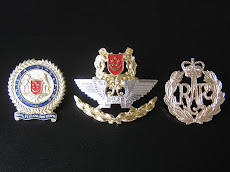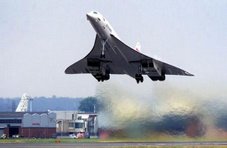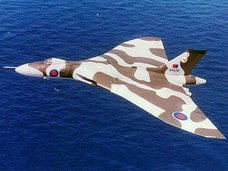>> Changi's rich aviation heritage
by Derek Yeo - SINGAPORE - 31 July 2006
CHANGI means many things to many people.
To Singaporeans and travellers worldwide, the name points to the famous airport. To thousands of Commonwealth veterans - especially former prisoners-of-war - the name conjures images of the infamous prison camp in World War 2 and of the hardship they endured. And certainly of Changi Chapel. To many former Royal Air Force (RAF) service personnel, it was the exotic Far East posting of their lives in the 1940s, 50s and 60s.
RAF Station Changi was home to Britain's Headquarters, Far East Air Force. Its area of command covered RAF Gan in the Indian Ocean, RAF Kai Tak in Hong Kong, RAF Labuan in Borneo and two other stations in Singapore: Seletar and Tengah. Changi played crucial roles in the Malayan Emergency 1948 -1960, Indonesian Confrontation 1963 - 1966 and Brunei Revolt 1963.
I too, have fond memories of Changi. During my service with the RAF in the sixties, I visited the station on many occasions. It was an uncertain period for newly-independent Singapore. Indonesian President Sukarno had just embarked on a campaign to confront Malaysia and Singapore.
Pop's canteen on the hill next to the camp entrance at Tangmere Road was a favourite stop for coffee. The Sergeants Mess at Old Sarum Road, a well-known landmark, served essential living, catering and social needs for British airmen. Rustic Changi Village and the beach were popular haunts with servicemen and their families.
The roads in the station bore, even to this day, names of famous RAF airfields in the UK, such as Cranwell, Wittering, Netheravon, Leuchars, Catterick and Andover.
I spent half a year at the old RAF hospital recovering from an urgent surgery. Squadron Leader Chapman-Andrews, the dental surgeon in charge of my operation, did a professional job. The medical treatment and care given me, suffice to say, was excellent.
In the 1970s, I had the opportunity again of living and working in Changi. By then, I had joined the Republic of Singapore Air Force. My unit, 120 Squadron (equipped with Alouette III helicopters) had moved to the Changi dispersal (off Telok Paku Road) from its original base at Seletar airbase. The British had handed over the entire Changi airfield intact to Singapore in 1971.
Now, a retired airman, Air Commodore Henry Probert, has published "The History of Changi" in collaboration with Changi Museum and the RAF Changi Association.
The book was launched on the 28 July 2006 at Changi Museum by Singapore's Minister of Transport and Second Minister of Foreign Affairs, Mr Raymond Lim.
What the Japanese built in World War 2, then developed by Britain as her premier air base in the Far East has come full circle. In 1981, after a decade as an RSAF air base, Changi replaced Paya Lebar Airport as Singapore's premier civil airport.
Singapore Changi Airport, as it is now officially known, showcases all that are "uniquely Singapore" around the globe.
Copyright © 2007 - 2008 A I R M E News. All rights reserved.
Monday, July 31, 2006
Subscribe to:
Post Comments (Atom)





No comments:
Post a Comment